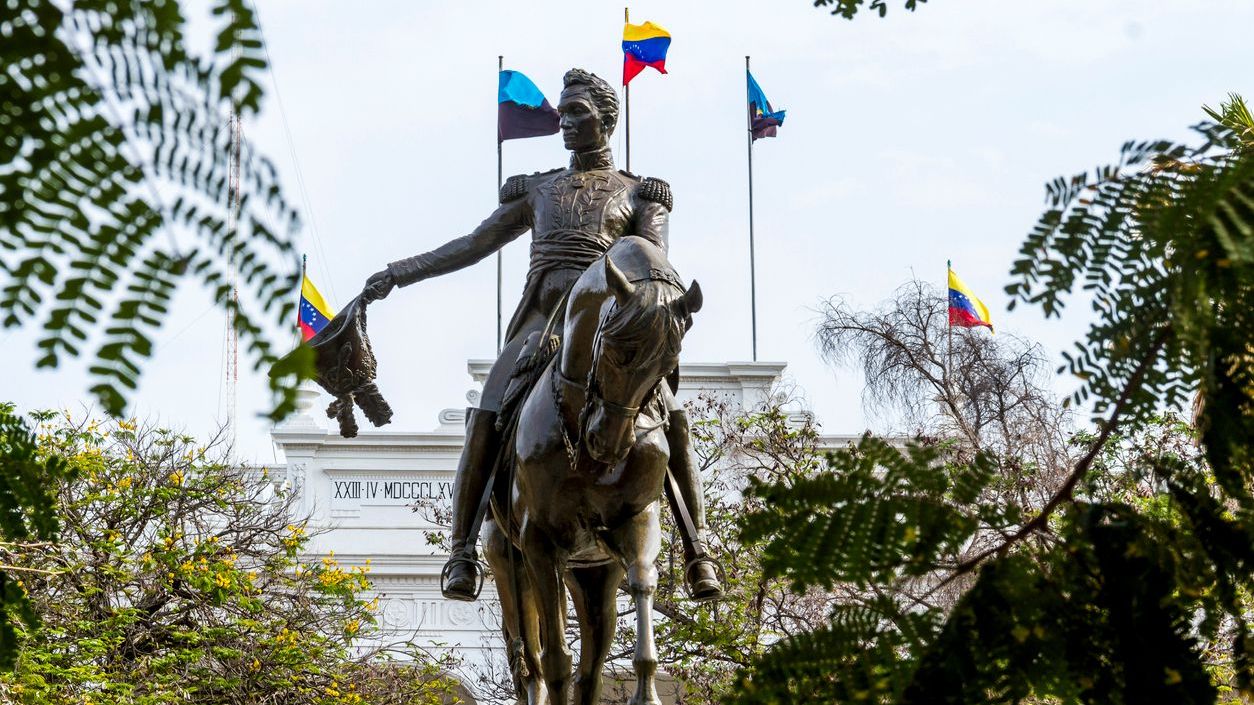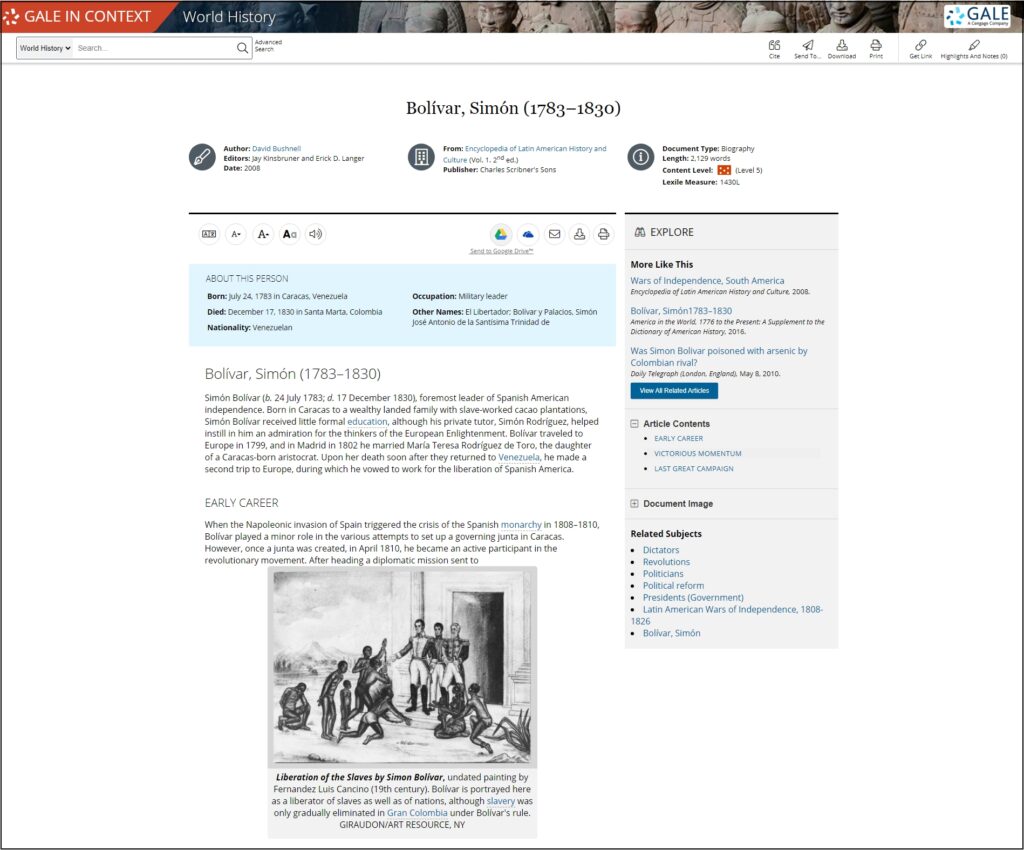| By J. Robert Parks |
Although George Washington may be known as the father of his country, Simón Bolívar is known as the liberator of his continent—South America, in his case. It was 200 years ago this week, on February 10, 1824, that Bolívar became Peru’s ruler after liberating it from Spanish colonial control. This came after he had already helped liberate what later became Venezuela, Colombia, Panama, and Ecuador. Educators and librarians looking to help students understand Bolívar’s significance as well as how South America transitioned from colonial rule to independence will find numerous resources in Gale In Context: World History.
Simón Bolívar was born on July 24, 1783, to a wealthy family in Caracas. When he was a young man, he traveled to Europe and was married in 1802, but he returned to South America after the death of his wife. Most of South America was under Spanish control at that point, but Napoleon’s occupation of Spain in 1808, known as the Peninsular War, upended Spanish rule throughout its colonies. A junta (or council) was formed in Caracas in 1810, and Bolívar responded by joining the revolution.
The royalists soon regained control of Spain’s South American colonies, and Bolívar and other revolutionaries continued to fight for independence. Bolívar was strongly influenced by the ideas of the Enlightenment and particularly the political ideals of republicanism, which championed the people’s right to choose their leaders. Bolívar was also opposed to slavery and argued that the enslaved people of South America should be freed. Gale In Context: World History helps students understand how innovative ways of thinking spread around the world and inspired people to act across long distances.
The fight for Venezuela’s independence went on for much of the 1810s, and Bolívar had to flee for a time to Jamaica and Haiti. When he returned to Venezuela in 1817, his revolutionary forces defeated the Spanish government, and Bolívar became president. He then united Venezuela with the area that would later become Colombia and Panama into a new republic called Gran Colombia.
Many people would have been content with that victory and focused on leading their new nation, but Bolívar had larger plans. He believed that all of South America should be a single united nation that could stand up to the European empires, so he led his forces south with the hopes of liberating Ecuador, Peru, and Bolivia (known as Upper Peru). In this, he was assisted by Antonio José de Sucre, his close friend and fellow military leader. Sucre led the forces at the Battle of Pichincha in May 1822, which helped secure Ecuador’s independence.
Another key figure in the Latin American wars of independence was José de San Martín, who had helped lead the independence movements in southern South America—particularly in Chile, which became independent in 1818. San Martín then moved northward to bring independence to Peru and Upper Peru, but he was only partly successful. In July 1822, Bolívar and San Martín met in Ecuador to discuss what the future of South America should be. Although the details of the meeting are unknown, the two men disagreed over the newly independent countries’ political structure. San Martín favored a monarchy with a strong ruler who could be chosen from a European royal family. Bolívar argued for a republican government with himself as leader. San Martín soon retired from his military leadership, and Bolívar continued his quest to liberate South America. Gale In Context: World History helps shed light on various alliances and contentions between people and coalitions that have shaped the trajectory of the modern world.
The battle for Peru’s independence lasted for the next two years and was not decisively secured until the Battle of Ayacucho in December 1824, as Sucre again led the victorious revolutionary army over the last of the royalist forces. Before that, however, Bolívar had arrived in Peru’s capital of Lima in September 1823, and on February 10, 1824, Peru’s congress declared Bolívar dictator of Peru.
A dictator isn’t the same as the president of a republic, but Bolívar’s commitment to republican democracy was fluid. Although he believed that a republic was the best form of government, he wasn’t confident that the people of Peru and Upper Peru were ready for a democratic form of government. He also proposed a lifetime presidency for Gran Colombia, believing it needed a strong central government. Bolívar’s own ambivalence about democracy can be seen as a forerunner of twentieth-century South American politics, where many countries have veered between democracy and dictatorship. In that way, Bolívar can be regarded more like the continent’s father.
About the Author
J. Robert Parks is a former professor and frequent contributor to Gale In Context: U.S. History and Gale In Context: World History who enjoys thinking about how our understanding of history affects and reflects contemporary culture.




